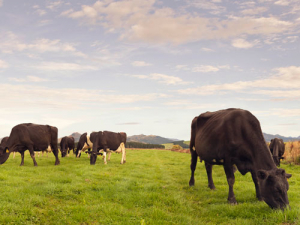M.I.A.
OPINION: The previous government spent too much during the Covid-19 pandemic, despite warnings from officials, according to a briefing released by the Treasury.
 Stats NZ says the increase in total goods exports was due to an increase in the value of dairy products.
Stats NZ says the increase in total goods exports was due to an increase in the value of dairy products.
Statistics released today offer some insight into how COVID-19 is affecting New Zealand’s primary exports.
The value of total goods exports rose by $212 million (4.5%) from February 2019 to reach $4.9 billion in February 2020, Stats NZ said today.
Stats NZ says the increase in total goods exports was due to an increase in the value of dairy products.
“This month’s total goods exports were up on the same month of 2019, led by dairy exports, in particular milk powder,” says Stats NZ international statistics manager, Darren Allan.
“Dairy product exports to China remained high, but logs, meat, and fish exports were lower.”
The rise in total goods exports was led by milk powder, up $191 million (28%) from February 2019. This was price-led as quantities were little changed.
Partly offsetting the rise were falls in forestry products (down $124 million or 27%, mainly reflecting a fall in untreated logs), and fish (down $47 million or 27%).
The total value of meat exports was changed little, but higher quantities were exported to the United States instead of China.
Overall, meat export values fell slightly in February 2020 (down 1.4%), with a fall in sheep meat partly offset by a rise in beef.
Average prices per tonne were up for both beef and lamb, despite lower total export volumes for both commodities.
In February 2020, New Zealand exported less beef to China than in the same month last year, but more was shipped to the US.
“The value of monthly beef exports to the US was higher than to China for the first time since early 2019,” Allan said.
“Higher quantities of New Zealand beef exports were sent to the US, rather than China, following the COVID-19 outbreak in China.”
Exports to China fall
In contrast to rises in exports to all New Zealand’s other main markets, exports to China fell $120 million in February 2020.
The leading contributors to the fall in exports to China were:
• untreated logs (down $80 million)
• sheep meat (down $73 million)
• beef (down $65 million)
• fish (down $40 million).
These falls were offset by a rise in milk powder, up $90 million on February 2019. This was led by a 30% increase in average unit values. The quantity exported also rose, up 13%.
The black and white coat of Holstein- Friesian cows is globally recognised as a symbol of dairy farming and a defining trait of domestic cattle. But until recently, scientists didn’t know which genes were responsible for the Holstein’s spots.
According to the New Zealand Dairy Statistics 2024/25 report, New Zealand dairy farmers are achieving more with fewer cows.
It's not often that mother and daughter share the limelight, but for two of Tahuna's Charbelle Holsteins' show cows, that's exactly that happened at the Holstein Friesian North Island Champonships, held at the Waikato A&P Show.
Fonterra Edendale has been recognised with the Mars Dairy Supplier Quality Award for the top performing supplier sites in the global food company's dairy supply chain.
Sheep milk processor Maui Milk has achieved grass-fed certification of milk supply against the AsureQuality Grass-Fed Scheme.
Federated Farmers says it is cautiously welcoming signals from the Government that a major shake-up of local government is on its way.